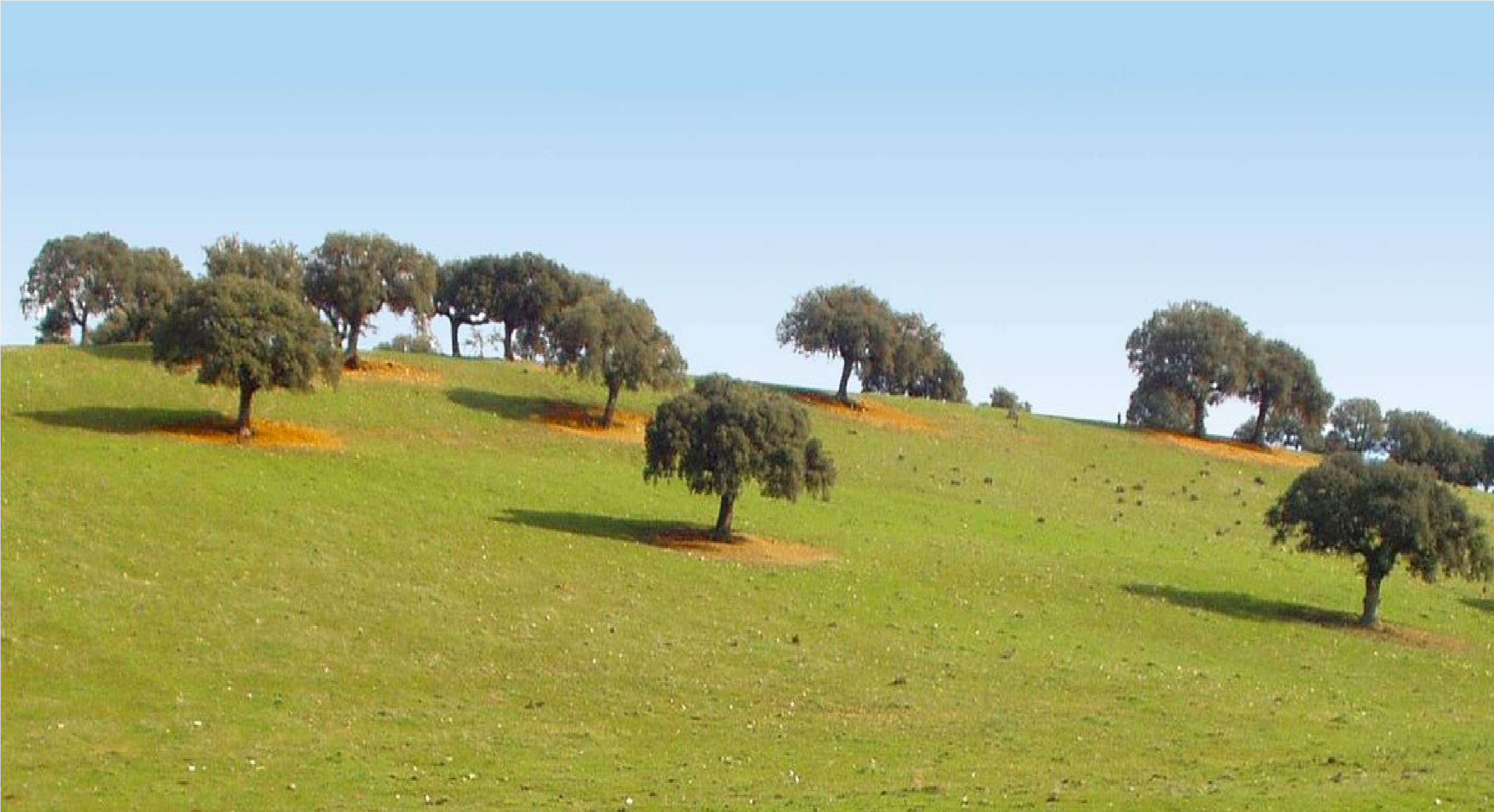With a share of almost 50% of the world’s production of cork products, Portugal is the market leader in this sector. Over 8000 workers and 658 companies are active in the sector and 72% of the cork oaks (Quercus suber) are located in the Alentejo. One of the typical landscapes of this region is the Montado. The Montado is a grazed oak grove that covers large areas in southern Portugal.
The Montado is not a natural landscape but a man-made one. The first evidence of slash-and-burn agriculture in Mediterranean forests dates back to the Neolithic period (9000 years ago). The protection and preservation of trees in the Montado system was written down later, in the VII century. In the Leges Visigothorum, a collection of Visigothic legal records from late antiquity and the early Middle Ages, the cutting of cork oaks and holm oaks was made a punishable offence.

Portugal exported cork to England as early as the 14th century. However, cork did not establish itself as an important export commodity until the 17th century, when glass bottles and corks became established as containers and seals for wine.
In addition to cork products, the Montado provides man with many products that are still highly valued today. The acorns serve as feed for the Iberian pig, which is then processed into smoked ham and grilled meat. The rich flora found in the Montado has long been used by beekeepers, who set up their hives among the trees. Honey from the Alentejo can come from a variety of flowers: Lavender, rosemary, strawberry tree or cistus. Mushrooms and various aromatic herbs can also be found or grown in the Montado.
In addition to their economic role, montados also play an important role in soil conservation, water quality and oxygen production. They are unique Mediterranean ecosystems with a rich and diverse biodiversity and are considered relevant for nature conservation at national and European level. More than 120 bird species have been inventoried in the Montados, some of them threatened species, such as the Bonelli’s Eagle, the Iberian Imperial Eagle and the Black Stork. The almost extinct Iberian lynx (Lynx pardinus) also finds a habitat in the Montado.
It would be difficult to imagine an Alentejo without the Montado and this unique landscape must be preserved for future generations.



0 Comments